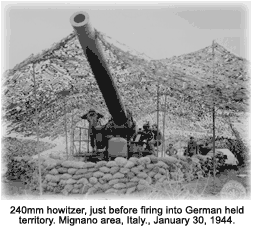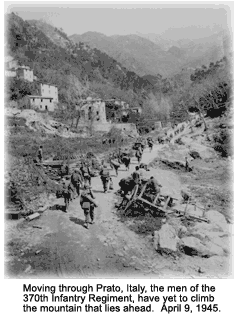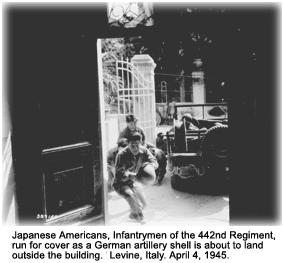Which Two Italian Islands Were Controlled By The Allies In 1943-44?
Italian Campaign
The Italian Campaign of World War Ii was the name of the Centrolineal operations in and around Italy from 1943 to the end of the war. Following victory in the North African Entrada, there was disagreement amidst the Allies on the next step they should take. The decision to invade Italia was fabricated in January 1943 at the Casablanca Briefing — the first war briefing between the Allied powers — held in Casablanca, Morocco. The briefing between Roosevelt and Churchill took steps toward planning the Allied strategy and the terminate of the war. It besides established terms of unconditional surrender. In a radio broadcast to the American people on February 12, 1943, Roosevelt fabricated clear that he was:
... that the only terms on which nosotros shall bargain with any Axis goverment or any Axis fations are the terms proclaimed at Casablanca: "Unconditional surrender." In our uncompromising policy nosotros mean no harm to the common people of the Axis nations. But nosotros do mean to impose punishment and retribution in total upon their guilty, barbaric leaders.
 The Italian Campaign placed Allied troops on the European mainland for the starting time time, but information technology was never intended as a substitute for an attack aimed at Frg by manner of the more open route through northern France. The invasion of Italian republic had several lesser objectives, to:
The Italian Campaign placed Allied troops on the European mainland for the starting time time, but information technology was never intended as a substitute for an attack aimed at Frg by manner of the more open route through northern France. The invasion of Italian republic had several lesser objectives, to:
A plan was hatched to fool the Germans into thinking that the next Allied move would be to invade Sardinia and Corsica. In the meantime, Operation Husky was the largest amphibious operation of the state of war in terms of men landed on the beaches and of frontage — it overshadowed even the Normandy landings (D-Day). Even as the Allies had been preparing to invade Sicily, the Italian people and their authorities had become increasingly disenchanted with the war. After the loss of Due north Africa, the invasion of Sicily, and the first bombing of Rome, the Italian king forced Mussolini to resign as caput of the government. The Italians wanted to pull out of the war, but they were virtual prisoners of German forces in Italy, which were strongly reinforced by Hitler. Information technology was hoped that an invasion would knock Italy completely out of the state of war. The elimination of Italy every bit an enemy would enable the Royal Navy to completely dominate the Mediterranean Sea, thereby massively improving communications with Egypt, the Far East, the Middle East, and India. Occupying Italy also would provide airfields shut to Germany and the Balkans. General Dwight D. Eisenhower was supreme commander, while General Sir Harold Alexander served every bit ground commander. Alexander controlled General Bernard Montgomery's Eighth Ground forces besides as the newly created Seventh U.Due south. Army under Full general George S. Patton Jr..  Given the realization that the invasion of France would exist impossible in 1943, it was decided to utilise the soldiers from the recently won N African Campaign to invade the Italian island of Sicily. The goal was to remove the island as a base for Axis shipping and shipping, assuasive free passage to Allied ships in the Mediterranean Sea, likewise equally putting pressure level on the Italian regime to pull out of the war. A combined British-American invasion of Sicily began on July x, 1943, with seaborne and airborne landings. The Germans were unable to prevent the Allied capture of the island, merely they did succeed in evacuating nearly of their troops to the mainland, the terminal leaving on Baronial 17, 1943. The American forces that fought in Sicily were far more sophisticated than those that had gone into battle in North Africa. New landing craft, some capable of begetting tanks, had fabricated getting ashore much quicker and surer. In addition, new amphibious trucks eased the problem of supply over the beaches. Commanders also were alert to avoid a error ofttimes made in North Africa of parceling out divisions in modest increments. British forces landed on the "toe" of Italy on September 3, 1943. The Italian government surrendered almost immediately, but German forces had prepared to fight without their assistance. American forces landed at Salerno and boosted British forces at Tarnato. While the rough terrain prevented fast motion and proved ideal for defense, the Allies continued to push the Germans n throughout the rest of the year. The southernmost High german defensive line, which was a series of armed services fortifications in Italy, ran beyond the land from where the Garigliano River flows into the Tyrrhenian Sea in the west, through the Apennine Mountains to the mouth of the Sangro River on the Adriatic Sea in the east. Chosen the Wintertime Line, information technology was the strongest German defensive line south of Rome, and was fortified with gun pits, concrete bunkers, machine-gun emplacements, and minefields. The western part of the line, which was centered around the historic Monte Cassino monastery, was called the Gustav Line. Those defensive lines proved to be major obstacles to the Allies. The Boxing of Monte Cassino was a serial of 4 battles that began on January 4, 1944. The battles were fought with the intention of breaking through the Gustav Line to seize Rome. Monte Cassino was finally captured in May 1944, which allowed the British and American divisions to begin their accelerate on Rome, whose capture finally came to fruition simply 2 days earlier the Normandy invasion. The focus of the Allied war confronting Germany shifted to France, and with the shift came a gradual diminution of Centrolineal strength in Italy. Allied forces reached Federal republic of germany`south last line of defence force in the Northern Apennines, chosen the Gothic Line.
Given the realization that the invasion of France would exist impossible in 1943, it was decided to utilise the soldiers from the recently won N African Campaign to invade the Italian island of Sicily. The goal was to remove the island as a base for Axis shipping and shipping, assuasive free passage to Allied ships in the Mediterranean Sea, likewise equally putting pressure level on the Italian regime to pull out of the war. A combined British-American invasion of Sicily began on July x, 1943, with seaborne and airborne landings. The Germans were unable to prevent the Allied capture of the island, merely they did succeed in evacuating nearly of their troops to the mainland, the terminal leaving on Baronial 17, 1943. The American forces that fought in Sicily were far more sophisticated than those that had gone into battle in North Africa. New landing craft, some capable of begetting tanks, had fabricated getting ashore much quicker and surer. In addition, new amphibious trucks eased the problem of supply over the beaches. Commanders also were alert to avoid a error ofttimes made in North Africa of parceling out divisions in modest increments. British forces landed on the "toe" of Italy on September 3, 1943. The Italian government surrendered almost immediately, but German forces had prepared to fight without their assistance. American forces landed at Salerno and boosted British forces at Tarnato. While the rough terrain prevented fast motion and proved ideal for defense, the Allies continued to push the Germans n throughout the rest of the year. The southernmost High german defensive line, which was a series of armed services fortifications in Italy, ran beyond the land from where the Garigliano River flows into the Tyrrhenian Sea in the west, through the Apennine Mountains to the mouth of the Sangro River on the Adriatic Sea in the east. Chosen the Wintertime Line, information technology was the strongest German defensive line south of Rome, and was fortified with gun pits, concrete bunkers, machine-gun emplacements, and minefields. The western part of the line, which was centered around the historic Monte Cassino monastery, was called the Gustav Line. Those defensive lines proved to be major obstacles to the Allies. The Boxing of Monte Cassino was a serial of 4 battles that began on January 4, 1944. The battles were fought with the intention of breaking through the Gustav Line to seize Rome. Monte Cassino was finally captured in May 1944, which allowed the British and American divisions to begin their accelerate on Rome, whose capture finally came to fruition simply 2 days earlier the Normandy invasion. The focus of the Allied war confronting Germany shifted to France, and with the shift came a gradual diminution of Centrolineal strength in Italy. Allied forces reached Federal republic of germany`south last line of defence force in the Northern Apennines, chosen the Gothic Line.  In the spring of 1945 Allied forces penetrated that final German defensive line to enter the fertile plains of the Po River valley. On May 2, the Germans in Italia surrendered. Less generally acclaimed than other phases of World State of war II, the campaign in Italy nevertheless played a vital role in the overall conduct of the war. The Italian campaign involved some of the hardest fighting in the war and price the United states of america forces some 114,000 casualties. But the campaign was of import in determining the eventual outcome of the war, since the Allies engaged German forces that could mayhap have upset the balance in France.
In the spring of 1945 Allied forces penetrated that final German defensive line to enter the fertile plains of the Po River valley. On May 2, the Germans in Italia surrendered. Less generally acclaimed than other phases of World State of war II, the campaign in Italy nevertheless played a vital role in the overall conduct of the war. The Italian campaign involved some of the hardest fighting in the war and price the United states of america forces some 114,000 casualties. But the campaign was of import in determining the eventual outcome of the war, since the Allies engaged German forces that could mayhap have upset the balance in France.
Which Two Italian Islands Were Controlled By The Allies In 1943-44?,
Source: https://www.u-s-history.com/pages/h1742.html
Posted by: johnsonnelice.blogspot.com


0 Response to "Which Two Italian Islands Were Controlled By The Allies In 1943-44?"
Post a Comment